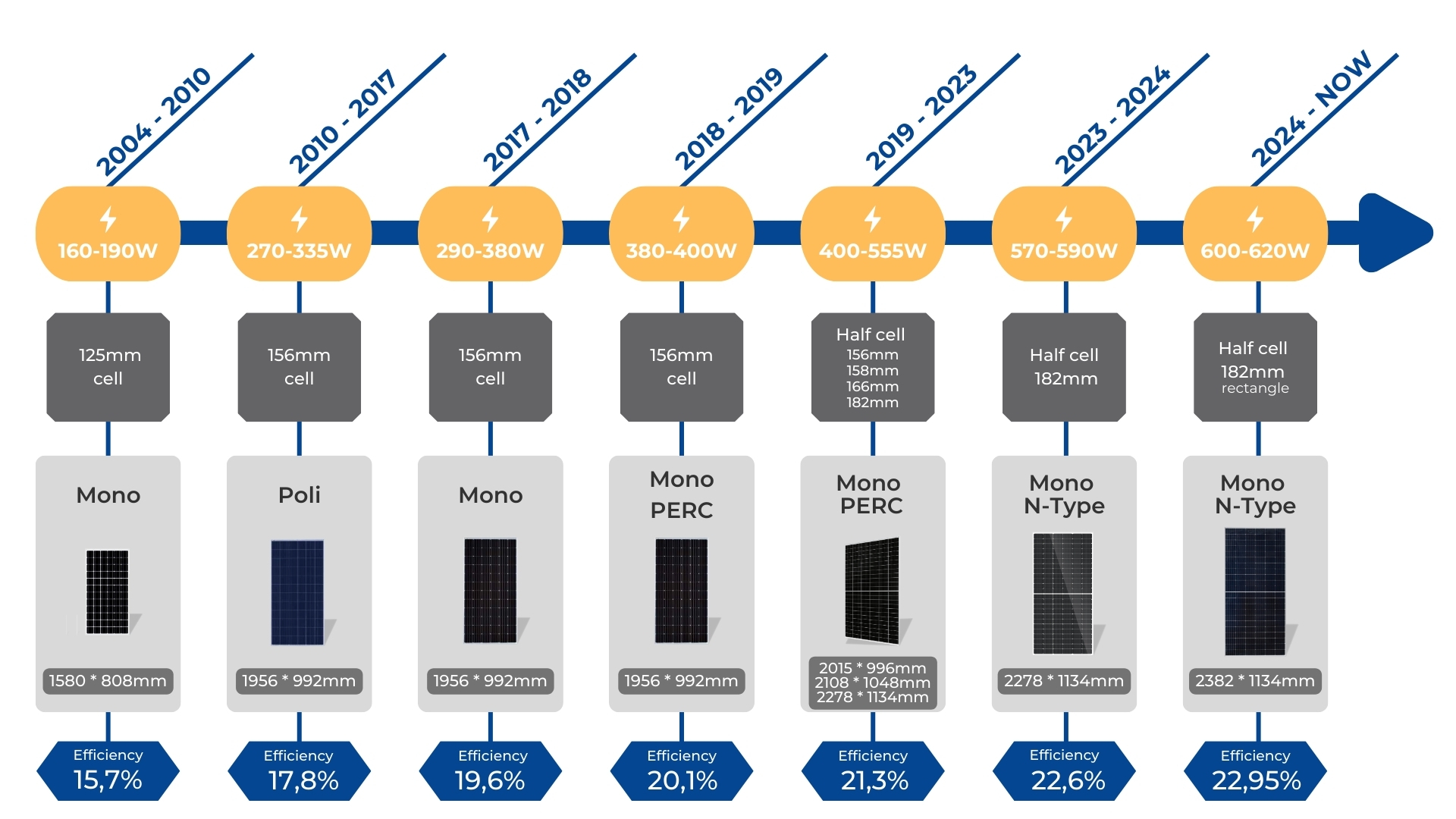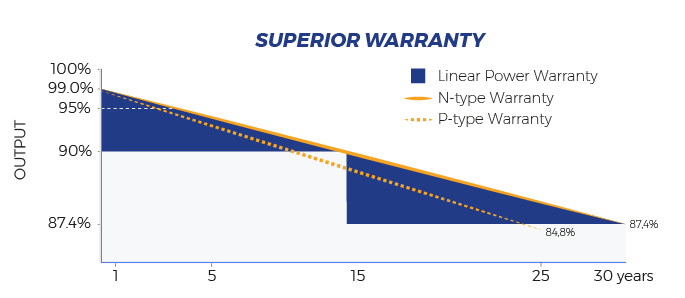Evolution of Photovoltaic: In August 2024, Helius Sunlink PV, a pioneer in solar panel manufacturing, celebrated 20 years of history supplying photovoltaic modules to the global market.
Since its foundation in 2004, the company has focused on developing high-efficiency, high-quality products, continuously researching and improving technologies that have progressively increased the power and efficiency of its modules over the past two decades.

In addition to the differences in power, ranging from 160W to 620W, the technologies, raw materials, and cell sizes also evolved during this period.
TECHNOLOGY AND RAW MATERIALS
The monocrystalline modules that were part of the portfolio between 2004 and 2018 had efficiencies ranging from 14.1% to 19.6%. These models are known for their better performance in high-temperature conditions compared to other technologies, making them ideal for hot and sunny regions, like Southern Europe and some countries in South America.
On the other hand, the polycrystalline modules, produced between 2010 and 2017, had efficiencies between 17% and 17.8% and are recommended for large-scale power plants due to their better cost-effectiveness. These models are ideal for geographic locations with high levels of direct solar radiation, such as North Africa and parts of Latin America, particularly Chile.
Regarding mono PERC (Passivated Emitter Rear Cell) technology (2018–2023), the main feature is the combination of monocrystalline cells with a thin passivation layer, a process that creates an optical effect that enhances solar radiation reflection within the cell, increasing light absorption and the energy generated. With this technology, Helius models offer efficiencies between 19.3% and 21.3%. These modules are capable of maintaining high efficiency in extremely hot countries and are suitable for residential, industrial, and large-scale power plant projects.
Over the years, continuous research aimed at increasing cell efficiency and improving production processes has led to the development of photovoltaic panels with higher output power without a significant increase in the product’s dimensions.
For example, the TopCon N-Type technology, implemented in 2023, offers an energy generation guarantee of 87.4% in the 30th year. When compared to PERC technology, it can be observed that by the 25th year, the expected energy generation is around 84.8%. This reflects a 3.07% increase in energy generation over the same period in modules of similar size, solely due to the technological advancement of photovoltaic modules.
Read Also: http://www.he-solar.com/internal-cell-production-quality-control-strategy-at-helius-sunlink-pv/

“This is a constant concern among customers. In addition to asking about the module’s power output, they often inquire about its dimensions, considering the area the panel will occupy in their projects. One of the modules we launched at Intersolar South America 2024 was the 620W Helius Genesis Plus: it caught the attention of integrators who are interested in efficient products for their projects, delivering more power to the customer without taking up more space,” says Eduard Joseph Krummenauer, Country Manager of Helius Sunlink PV.
CELL TYPES
Regarding cell types, since 2004, Helius has developed modules with cells of various sizes, including 125mm, 156mm, 158mm, 166mm, and 182mm. The different cell sizes are primarily driven by the need to increase the efficiency of the modules. For example, by increasing the cell size from 125mm to 182mm, there is an efficiency improvement of 46.8%, from 14.1% up to 20.7%.
In addition to square cells, working with Half Cell (rectangular) cells offers numerous benefits: reduced microcracking, lower resistive losses due to halved electrical currents, and reduced energy generation losses in panels installed in partial shading conditions.
Being attentive to market needs and developing products that meet those demands is not an easy task, but Helius has maintained this vision as a core principle throughout its 20 years of operation. “A customer-centric approach is crucial for Helius to directly deliver quality products to over 200 countries. Our goal is to see the Helius products in different houses around the world, generating savings and ensuring project longevity.”
Eduard Krummenauer reflects on Helius’ 20-year history: “Looking back at all the advancements we’ve made is a source of pride for us, both in terms of product development and in production volumes, processes, and global presence. We are active in over 200 countries, especially in Brazil, with products up to 620W and TopCon N-type technology, offering the highest efficiency in the market. Additionally, we recently launched the Helius Hyperion Zero Busbar, whose technology further increases module efficiency. This growth and evolution motivate us to continue investing in research and development, improving our technology to offer increasingly efficient and robust products.”
Helius Sunlink PV is a pioneer in the production of photovoltaic panels, and since 2004, its values have been rooted in quality and responsibility, reflected in its pursuit of new technologies. This drive has provided the Brazilian market with innovative products that feature high efficiency and cutting-edge technology. After 20 years, Helius now delivers modules with power output nearly four times greater and efficiency up to 62% higher than initially offered.


